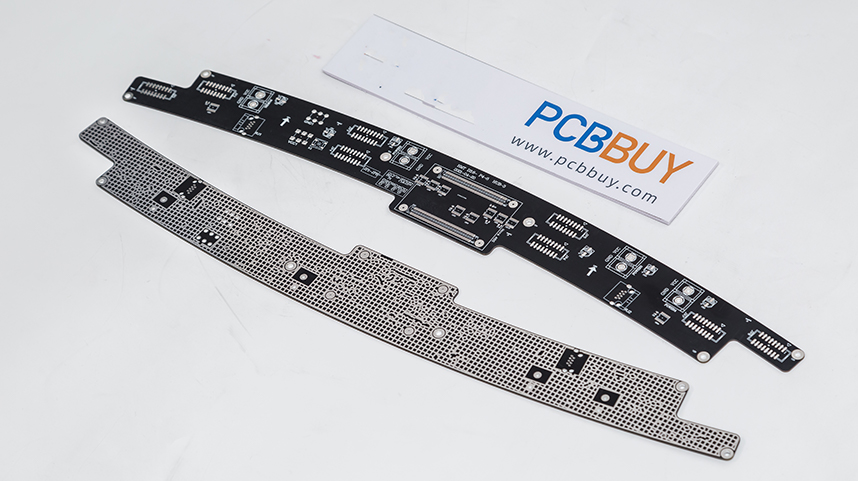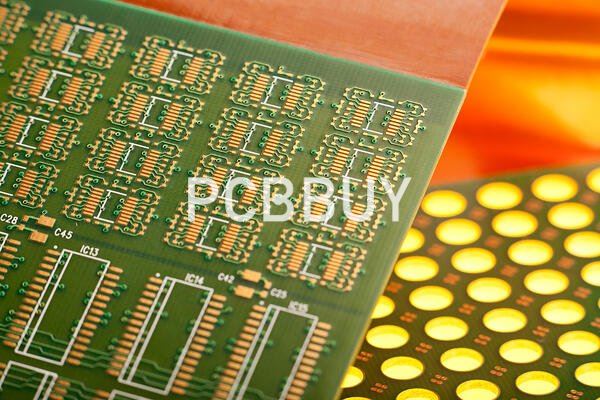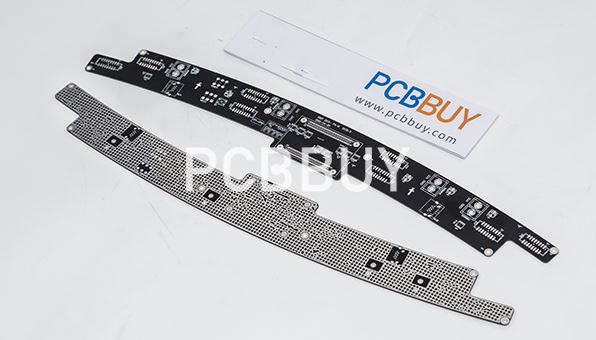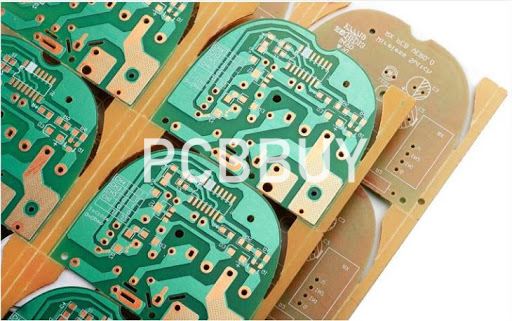PCB impedance control
By:PCBBUY 06/03/2021 17:55

Impedance measures the opposition of an electric circuit when alternating current is applied to it. It is the combination of the capacitance and the induction of an electric circuit at high frequency. Impedance is measured in Ohms, similarly to resistance. However, the two values should not be confused as resistance is a characteristic of direct current. When a signal passes from a conductor with given impedance to another of an identical impedance, the transmission is optimum. On the other hand, if the impedances are different, reflections and attenuation occur that deteriorate the signal.
Impedance control consists in measuring the impedance of certain traces when the PCB is manufactured and making sure they are within the limits given by the designer. Even though it is expensive, this technique became widespread after the turn of the century due to the continuously increasing frequencies of electronic components. It features in the following products, for example:
-Analogue and digital telecommunications
-Video signal processing
-Web boxes, TV, GPS, video games, digital cameras
-Computers, tablets, mobile phones
-Motor control modules

Why control impedance on PCBs?
When a signal needs a specific impedance to operate properly, controlled impedance should be preferred. In high frequency applications, keeping impedance constant on the complete electronic board is essential to protect the transferred data from damage and to maintain the clarity of the signal. The longer the trace or the higher the frequency, the more adaptation is needed. Any lack of rigor at this stage can increase the switching time for an electronic device or circuit and cause unexpected errors.
Uncontrolled impedance is difficult to analyze once the components are mounted on the circuit. Components have different tolerance capacities depending on their batch. Furthermore, their specifications are impacted by temperature variations which can lead to malfunctions. In such cases, replacing the component may seem to be the solution at first when, as a matter of fact, it is the unsuitable trace impedance that is the cause of the problem.
This is why trace impedances and their tolerances must be checked early on in the PCB design. Designers must work hand in hand with the manufacturer to guarantee the compliance of component values.
What are the main forms of PCB transmission lines?
What is microstrip?
Microstrip is a type of electrical transmission line which can be fabricated using printed circuit board technology, and is used to convey microwave-frequency signals. It consists of a conducting strip separated from a ground plane by a dielectric layer known as the substrate. Microwave components such as antennas, couplers, filters, power dividers etc. can be formed from microstrip, with the entire device existing as the pattern of metallization on the substrate.
Microstrip is thus much less expensive than traditional waveguide technology, as well as being far lighter and more compact. Microstrip was developed by ITT laboratories as a competitor to stripline (first published by Grieg and Engelmann in the December 1952 IRE proceedings).
The disadvantages of microstrip compared with waveguide are the generally lower power handling capacity, and higher losses. Also, unlike waveguide, microstrip is not enclosed, and is therefore susceptible to cross-talk and unintentional radiation.

For the lowest cost, microstrip devices may be built on an ordinary FR-4 (standard PCB) substrate. However it is often found that the dielectric losses in FR4 are too high at microwave frequencies, and that the dielectric constant is not sufficiently tightly controlled. For these reasons, an alumina substrate is commonly used.
On a smaller scale, microstrip transmission lines are also built into monolithic microwave integrated circuits.
Microstrip lines are also used in high-speed digital PCB designs, where signals need to be routed from one part of the assembly to another with minimal distortion, and avoiding high cross-talk and radiation.
Microstrip is one of many forms of planar transmission line, others include stripline and coplanar waveguide, and it is possible to integrate all of these on the same substrate.
A differential microstrip—a balanced signal pair of microstrip lines—is often used for high-speed signals such as DDR2 SDRAM clocks, USB Hi-Speed data lines, PCI Express data lines, LVDS data lines, etc., often all on the same PCB product. Most PCB design tools support such differential pairs.

What is stripline?
Stripline is the earliest form of planar transmission line. A stripline circuit uses a flat strip of metal which is sandwiched between two parallel ground planes. The insulating material of the substrate forms a dielectric. The width of the strip, the thickness of the substrate and the relative permittivity of the substrate determine the characteristic impedance of the strip which is a transmission line. As shown in the diagram, the central conductor need not be equally spaced between the ground planes. In the general case, the dielectric material may be different above and below the central conductor.
To prevent the propagation of unwanted modes, the two ground planes must be shorted together. This is commonly achieved by a row of vias running parallel to the strip on each side.
Like coaxial cable, stripline is non-dispersive, and has no cutoff frequency. Good isolation between adjacent traces can be achieved more easily than with microstrip. Stripline provides for enhanced noise immunity against the propagation of radiated RF emissions, at the expense of slower propagation speeds when compared to microstrip lines. The effective permittivity of striplines equals the relative permittivity of the dielectric substrate because of wave propagation only in the substrate. Hence striplines have higher effective permittivity in comparison to microstrip lines, which in turn reduces wave propagation speed.
Industry Category











